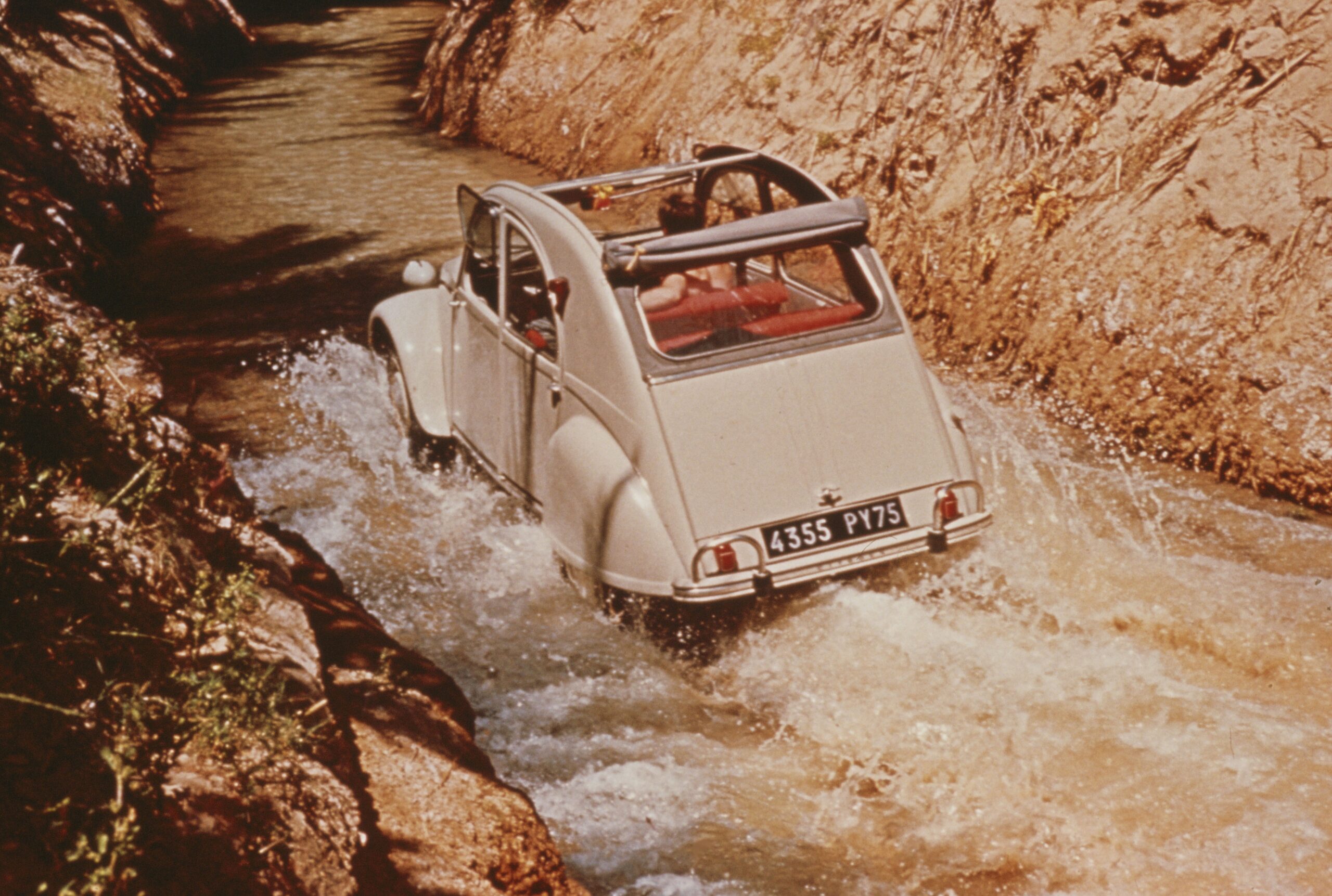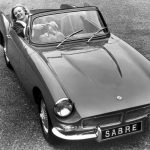No car is closer to a sailing ship than a Citroën 2CV. Above, the flutter of that canvas roof. Below, the sway of heeling over into a turn like the car’s about to capsize. Especially so in the older models, with their lack of constant velocity joints, where you come off the power entirely in a turn, relying on momentum like you were tacking into the wind. Little surprise, then, that such a machine was the favourite conveyance of the greatest author of nautical fiction the world has ever seen.
But first, a warning. If you are a fan of Patrick O’Brian and his series of novels, or of the 2003 film Master and Commander: the Far Side of the World, you may wish to stop here and go read or watch them instead. This is a story that proves the old adage, “never meet your heroes,” (unless your hero is Mario Andretti. Ten out of ten. Highly recommended). Because Patrick O’Brian is not who you think he is. Even his name isn’t technically real.
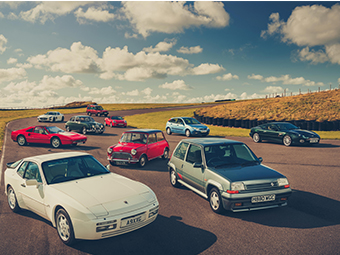
Let us begin in the middle, as most O’Brian enthusiasts did. Master and Commander, the first of the Aubrey-Maturin novels, was published in 1969, but it took 20 years until the first of the series was launched in the US, at which point success came at last. Fittingly, that novel was The Reverse of the Medal, a tale of loss and redemption.
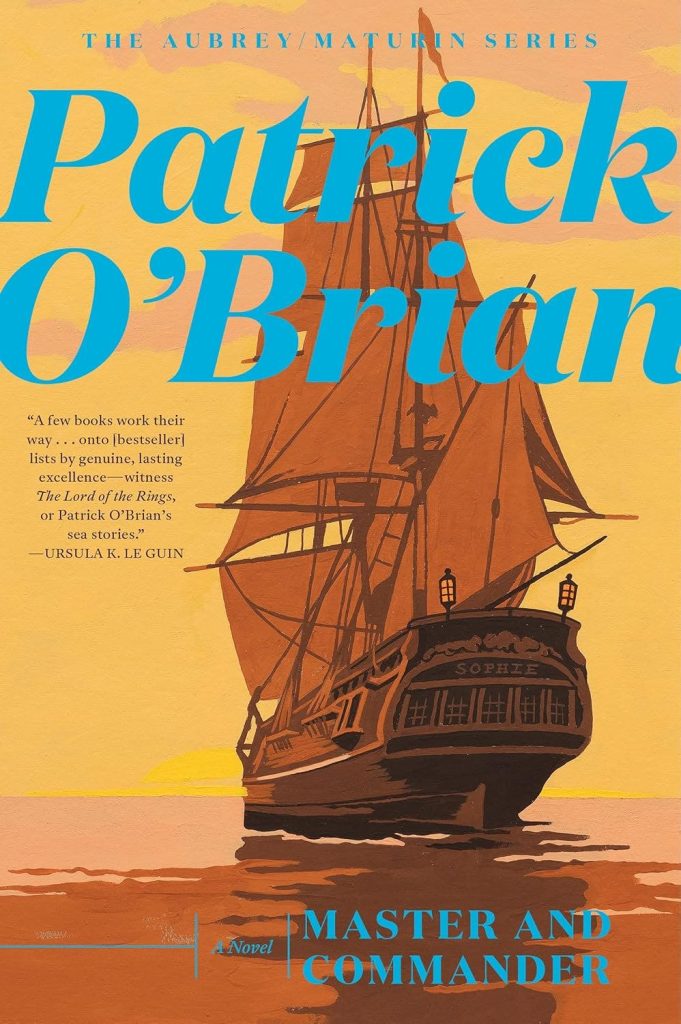
Likewise, Master and Commander the film, starring Russell Crowe and Paul Bettany, has taken years to ripen on the vine. When it opened in theatres in 2003, audiences failed to attend in throngs. Today, it has a faithful and ardent following, even in America, which is pretty good for a movie that has a game of cricket in it. Exactly because it is such an old-fashioned story about times long past, it has weathered the decades with grace. Old? No, it has a bluff bow, lovely lines. She’s a fine sea-tale, stiff, weatherly, and fast. Master and Commander is still in its prime.
The novels are, if anything, even better, 20 volumes and one unfinished voyage crammed with adventures and seafaring lingo. The genius of O’Brian is that his writing does not take a single second to explain the difference between a mizzen-shroud and a mainmast, he simply dives into the action and you’re left to catch up breathlessly like a newly minted midshipman. Besides which, the stories are as much about the friendship between the robust and piratical “Lucky” Jack Aubrey and the sometimes prickly Stephen Maturin as they are about historical accuracy peppered with broadsides. These two become our friends, our shipmates, and we cheer their victories and mourn their losses.
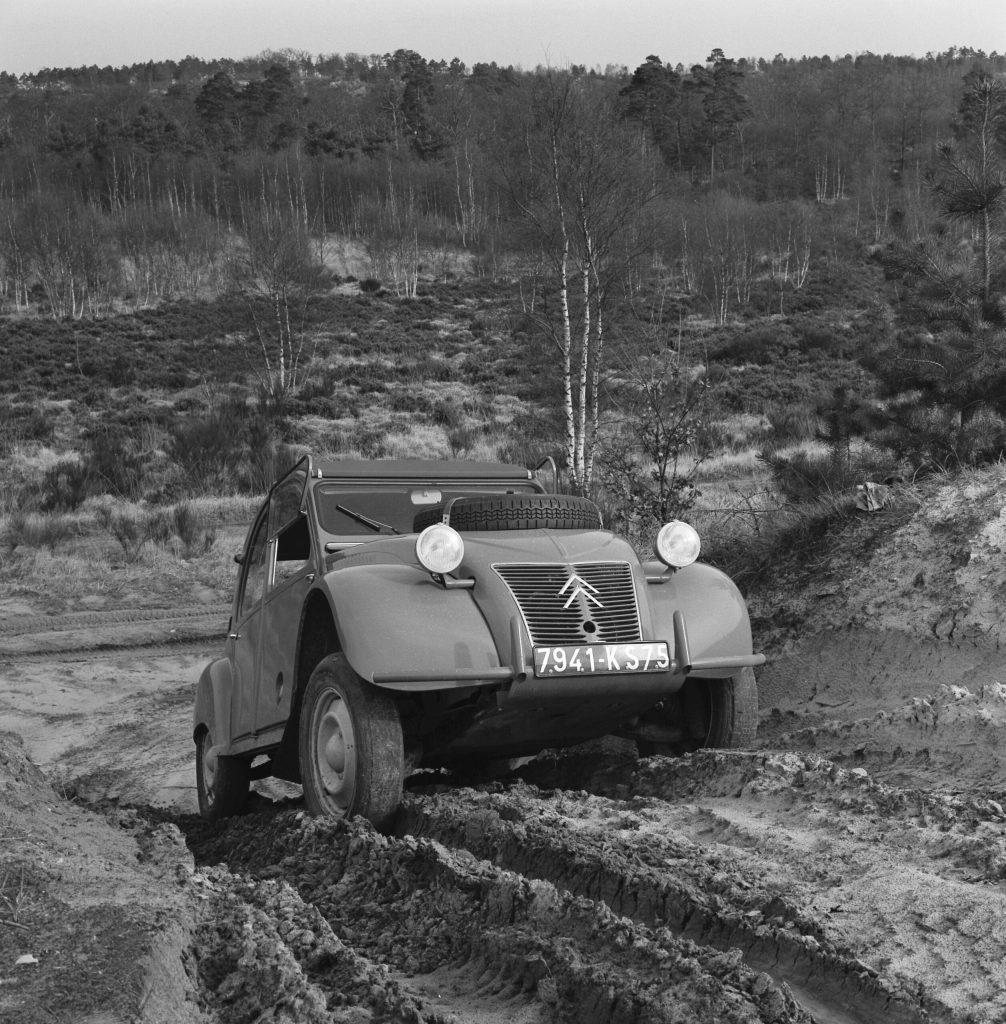
They’re great, and when you flip open the author’s bio page, there’s O’Brian, looking exactly as you’d expect. Scholarly and bird-like. A hint of Irish mischief behind that smile, and a knowledge of Napoleonic naval history as broad and deep as the Atlantic itself.
In 1993, looking to plumb the depths of the author of such a popular historical series, the New York Times dispatched a journalist to the town of Collioure in the Roussillon region of France, nestled in the foothills of the Pyrenees. O’Brian was known to refuse requests for interviews, so this was a rare chance to get a peek behind the curtain. Mark Horowitz, the writer, does manage to get him to talk a bit about his writing process, which includes driving high into the vineyards in his Citroën and walking for hours in the pre-dawn, thinking up challenges for his characters. However, when asked about his life before France, O’Brien shuts down Horowitz dead. “That seems to be getting rather close to a personal question,” he replies, and says no more.
O’Brian spins a tale of a life born into faded Irish aristocracy, war service as an ambulance driver and intelligence agent, and an introduction to sailing via a family friend’s bark-rigged merchant man. Only the ambulance driver part seems to actually have been true.
Born Richard Patrick Russ in Buckinghamshire in 1914, O’Brian had German and Irish heritage, but was pure Church of England English, and a land-lubber to boot. His father was a doctor, his mother died fairly young, and he was educated at grammar school in Sussex. The relative with the sailing ship seems not to have existed – in 1995, he was invited to sail aboard the yacht Andromeda by a fan of his work, a fan who was shocked to discover that “his knowledge of the practical aspects of sailing seemed, amazingly, almost nil.”
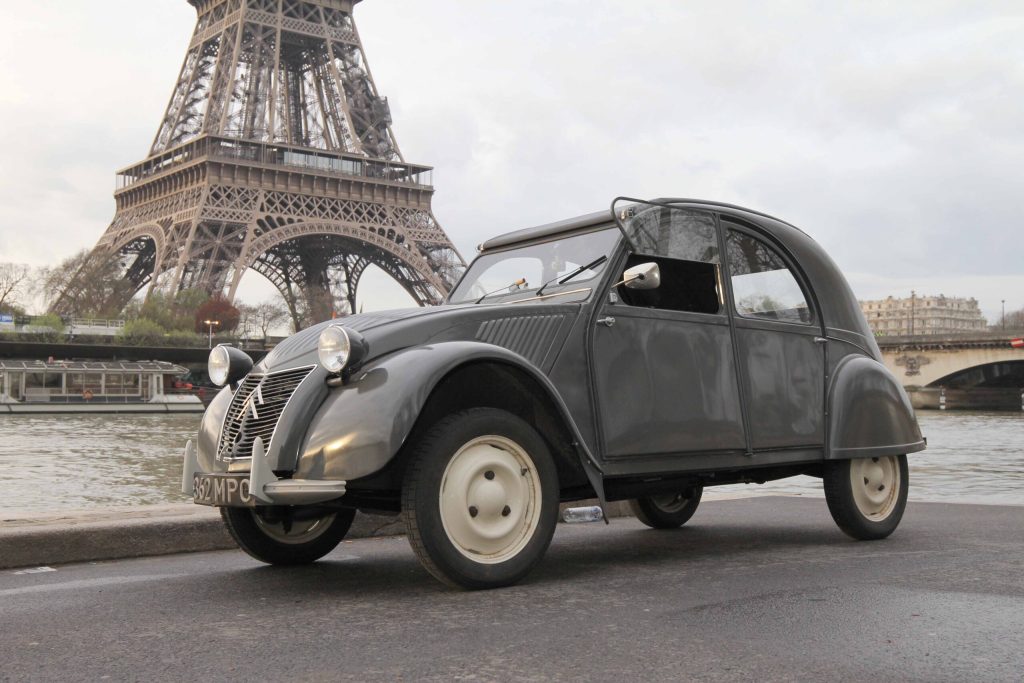
But fabricating a seaman-like childhood to paper over what appears to have been an unhappy one is no real crime, especially for a famous novelist whose publishers and readers desire a good backstory. The real rogue wave that will upset many a fan of O’Brian is the discovery that he had a young family that he essentially abandoned in 1940. While driving ambulances during the Blitz, he met Mary Tolstoy (mother to Nikolai Tolstoy), and left behind his first wife and two children, including an infant daughter born with spina bifida. He changed his last name to O’Brian in 1949.
It does at least seem to have been true love rather than an affair, as Mary and Patrick remained married for her entire life. They moved to France after the war, and here he took up life at a Mediterranean pace. He did his research locked up in his writing room with walls of books, not one of them written after 1820. It was as if he’d left the 20th century behind and delved entirely into the early 1800s.
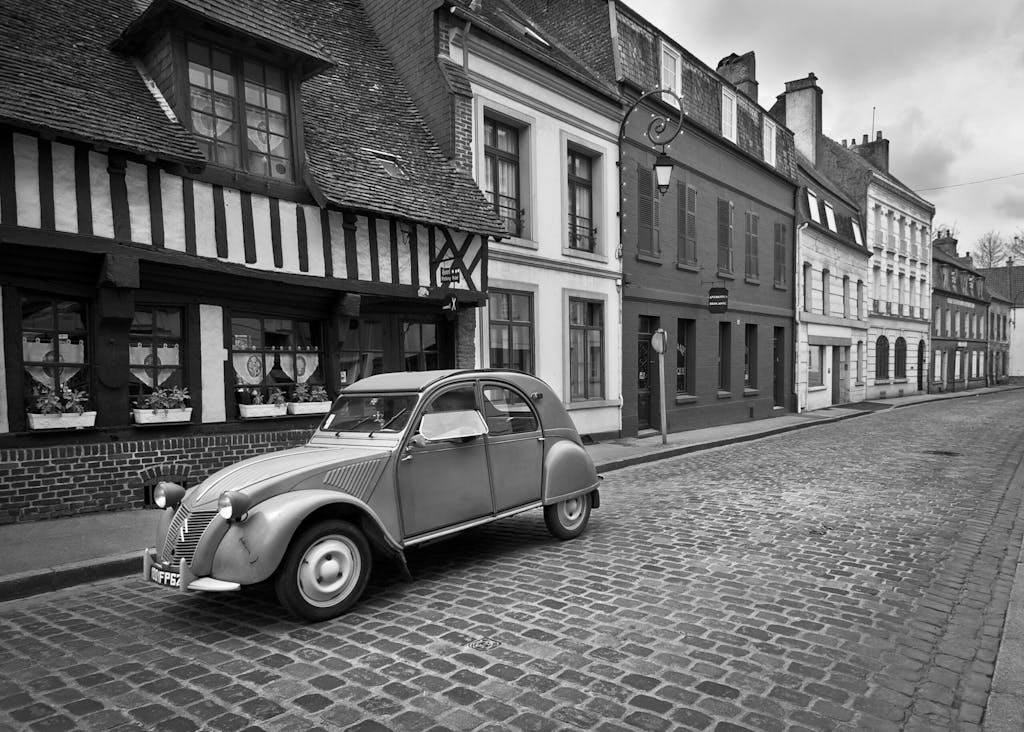
Fame and fortune came calling, but the trusty Citroën never left. A 2CV was, of course, just a part of rural French life at the time, as unremarkable as seeing an old Volkswagen Beetle kicking around California in the 1980s. But interviewers and biographers note that O’Brian bought a new Renault for highway travel to the airport for book tours and the like, but always seemed to prefer driving around town in his “ancient” Deux Cheveaux. His biographer, Dean King, speaks of him revving up the little two-cylinder engine to pass slow-moving tourists on a winding two-lane road.
The great Japanese animator Hayao Miyazaki is also known to be a tremendous fan of the Citroën 2CV, and has in fact been driving them for more than 50 years. In rare interviews (he is also something of a recluse, like O’Brian), he has praised the little French car for the way it exposes you to the elements. You have to wonder if there is something about such a simple and elemental machine that attracts the artist, the author trying to breathe life onto the page or screen.
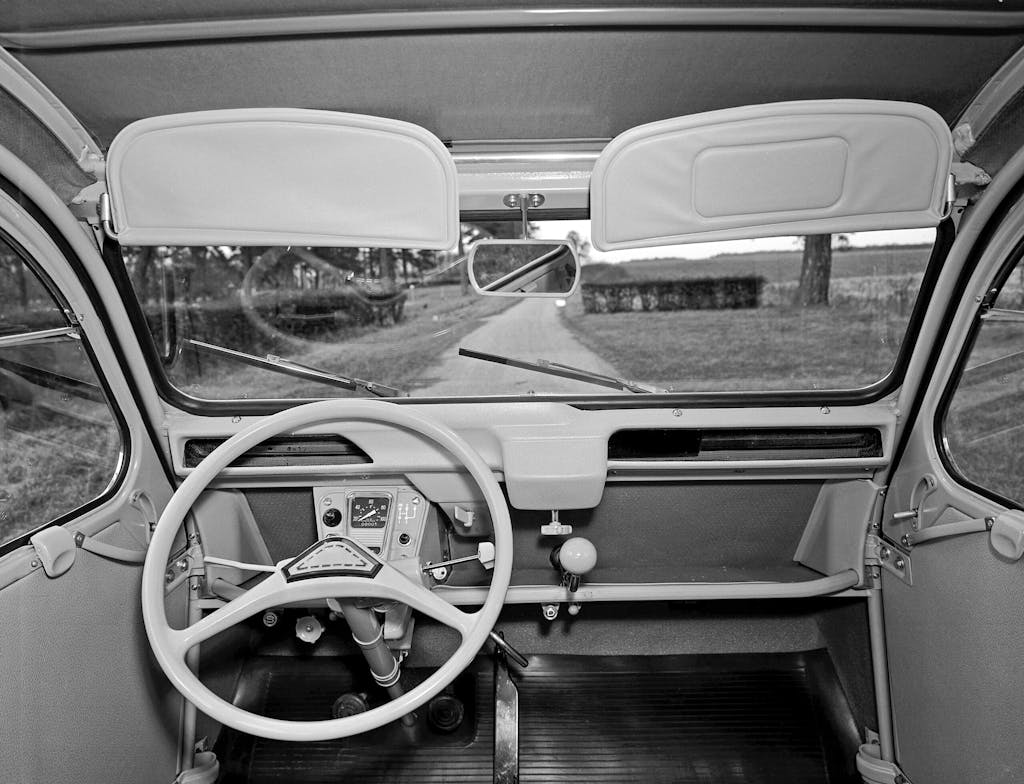
Fiction, even the complex kind based on exacting research, is easy. Both Jack Aubrey and Stephen Maturin have their glaring faults, but we love them in spite of them. As they are written, they cannot fail to charm.
Real life is more complex. The idea that Patrick O’Brian was an old sea-salt with an Irishman’s gift for storytelling is compelling but sadly untrue. He was a far more complex person, known to be cold and snobbish, an acerbic wit who would cut you off at the knees with a riposte. He was more Maturin than Aubrey.
But, as I open the first novel, Master and Commander, for perhaps my seventh read-through of the series, I like to picture him climbing out of bed, unable to sleep with past sins weighing heavy on his mind. Walking through his simple house, climbing into his faithful old Deux Chevaux, the car rocking on its springs as it accepts the weight. Driving it high up into the vineyard-clad hills, feeble headlights lighting the way. Stars above and a story growing in his mind and heart. Once more unto the sea; once more time to set sail with shipmates faithful and true.
